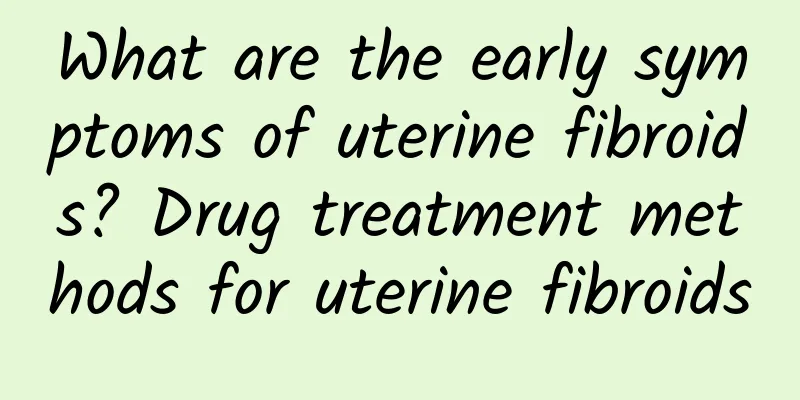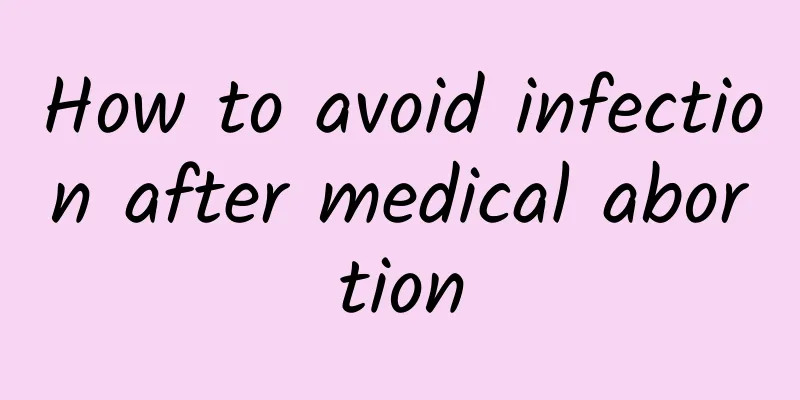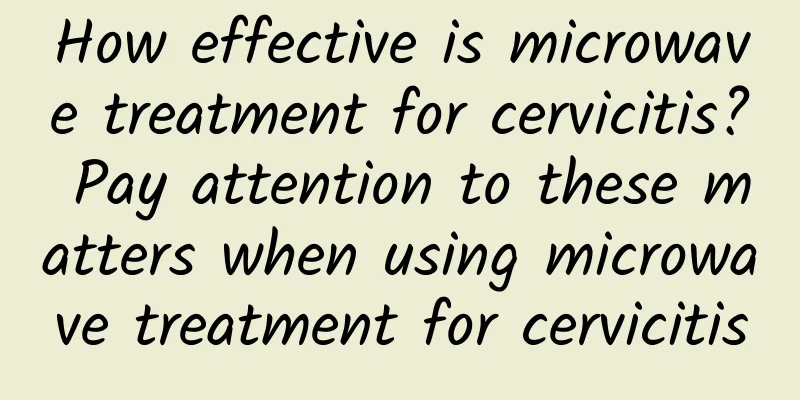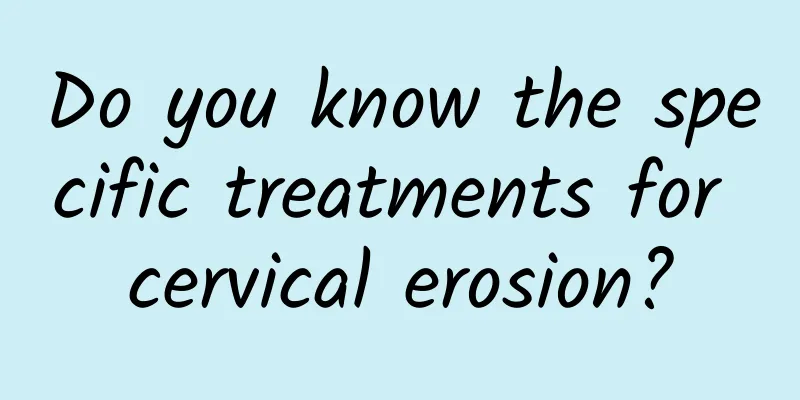What are the early symptoms of uterine fibroids? Drug treatment methods for uterine fibroids

|
Uterine fibroids are a disease with a high incidence rate. In the early stages, most uterine fibroids are benign. For this disease, patients should not have too much psychological burden. Timely treatment can quickly restore health. What is the treatment for uterine fibroids? Uterine fibroids are one of the most common benign tumors in the female reproductive organs and one of the most common tumors in the human body. They are also called fibroids and uterine fibroids. Because uterine fibroids are mainly composed of the proliferation of uterine smooth muscle cells and a small amount of fibrous connective tissue exists as supporting tissue, they are more accurately called uterine leiomyoma. Uterine fibroids. 1. Follow-up observation If the patient has no obvious symptoms and no symptoms of malignancy, regular follow-up observation can be performed. 2. Drug treatment (1) Gonadotropin-releasing hormone agonist (GnRH-a) Commonly used GnRH-a in clinical practice include leuprorelin (Enanton), goserelin (Zoloft), triptorelin (Dapiga), etc. GnRH-a should not be used for a long time and is only used for preoperative pretreatment, generally for 3 to 6 months, to avoid causing severe menopausal symptoms caused by low estrogen; small doses of estrogen can also be supplemented to resist this side effect. (2) Mifepristone is a progesterone antagonist that has been clinically used in the treatment of uterine fibroids in recent years. It can reduce the size of fibroids, but the fibroids grow more after discontinuation of the drug. (3) Danazol is used for preoperative medication or to treat uterine fibroids that are not suitable for surgery. Uterine fibroids can grow after the drug is stopped. Taking danazol causes liver damage and androgenic side effects (weight gain, acne, deepening of the voice, etc.). (4) Tamoxifen can inhibit the growth of fibroids. However, it should be noted that some patients may experience an increase in the response of uterine fibroids, and may even induce endometriosis and endometrial cancer. (5) Commonly used androgen drugs include methyltestosterone (methyltestosterone) and testosterone propionate (testosterone propionate), which can inhibit the growth of fibroids. Pay attention to the dosage to avoid masculinization. During the bleeding period of patients with uterine fibroids, if the amount of bleeding is heavy, uterine contractants (such as oxytocin, ergot) and hemostatic drugs (such as hemostatic acid, aminobenzoic acid (hemostatic aromatic acid), lizhihemostasis, Panax notoginseng tablets, etc.) can also be used, which can play a certain degree of auxiliary hemostatic effect. 3. Surgical treatment Surgical treatment of uterine fibroids includes myomectomy and hysterectomy, which can be performed abdominally, vaginally, or endoscopically (hysteroscopy or laparoscopy). The choice of surgery and surgical method depends on factors such as the patient's age, fertility requirements, size of the fibroid, location of growth, and medical technology conditions. (1) Myomectomy: The surgery to remove uterine fibroids and preserve the uterus is mainly used for young women under 40 who wish to retain their fertility. It is suitable for patients with large fibroids, heavy menstruation, compression symptoms, infertility caused by fibroids, submucosal fibroids, and rapidly growing fibroids without malignant transformation. (2) Patients with obvious symptoms of hysterectomy, the possibility of malignant changes in fibroids, and no fertility requirements are suitable for hysterectomy. Hysterectomy can be performed by total hysterectomy or subtotal hysterectomy. Patients of older age are suitable for total hysterectomy. The possibility of cervical malignancy must be eliminated before surgery. (3) Uterine artery embolization uses radiological intervention to insert an arterial catheter directly into the uterine artery, inject permanent embolic particles, block the blood supply to the uterine fibroids, and achieve fibroid shrinkage or even disappearance. UAE is currently mainly suitable for uterine fibroids with symptoms such as anemia caused by abnormal uterine bleeding. When choosing interventional treatment for uterine fibroids, caution should be exercised, especially for patients with uncontrolled pelvic inflammation, patients who wish to retain fertility, arteriosclerosis, and contraindications to angiography should be listed as contraindications to this treatment. 5% of patients may have premature ovarian failure and rare pelvic infections after surgery. Focused Ultrasound Therapy The temperature inside the tumor is raised locally to above 65°C, causing coagulative necrosis of the tumor and exerting a therapeutic effect. The treatment can shrink the fibroids and relieve symptoms. It is suitable for symptomatic uterine fibroids. There are no surgical scars after treatment, and the advantages are fast recovery after surgery. Side effects include skin burns, intestinal damage, hematuria, etc. The above article introduces the treatment methods of uterine fibroids and more, so most patients can choose the appropriate treatment method according to their own situation. As long as the disease is treated in time and does not cause particularly great harm to our health, it will be easy to recover. |
Recommend
What are the treatments for menopause?
We all know that people with menopause should go ...
How to do endometriosis care
Dysmenorrhea, the pain is mainly located in the l...
What causes congenital absence of vagina?
What causes congenital absence of vagina? Patient...
Common symptoms of uterine fibroids that you need to know
There are always some signs in the early stages o...
Overview of basic knowledge about threatened abortion
Every pregnant mother knows that the first three ...
How to treat vaginitis? There are these folk remedies for vaginitis
Vaginitis is inflammation of the vagina. The vagi...
When is the best time to have medical abortion?
The best time for medical abortion is within 49 d...
How to choose a good hospital for adnexitis?
As time goes by, adnexitis has developed into a c...
Some foods high in hormones can trigger uterine fibroids
Some foods with high hormone pollution can trigge...
What ointment is effective for vulvar leukoplakia and trichomoniasis? What are the symptoms of trichomoniasis?
Vulvar leukoplakia and trichomoniasis are both co...
What is pelvic inflammatory disease in traditional Chinese medicine? Which acupoints can be massaged to treat pelvic inflammatory disease?
What is pelvic inflammatory disease in traditiona...
Four most effective methods for diagnosing ectopic pregnancy
Ectopic pregnancy is a common symptom of gynecolo...
Seaweed is beneficial for the treatment of uterine fibroids. Several folk remedies for uterine fibroids are introduced.
What golden rules do patients with uterine fibroi...
Common treatments for cervical precancerous lesions
Clinical follow-up observations show that it take...
To prevent vulvar leukoplakia, you must understand its cause
Vulvar leukoplakia is a common gynecological dise...









